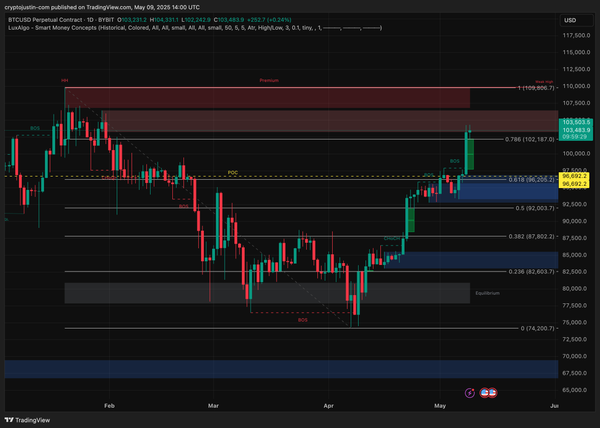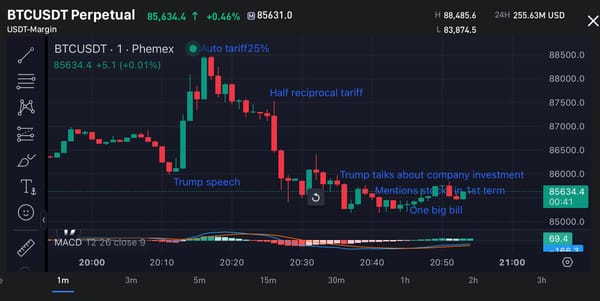Everything you need to know about buying US Stocks on Solana
I’m excited to share a brand-new product that bridges traditional US equities with the fast-moving world of tokenised securities. If you’ve been following my posts, you know I’ve been experimenting with Real-World Assets (RWAs) for a while now and this deserves some spotlight.

Imagine getting 1:1 economic exposure to Amazon, Tesla, Meta or even Google's share price — including dividends — without ever needing a traditional brokerage account. That’s exactly what has recently launched on the Solana blockchain. You can now buy and sell a select range of US equities on Raydium or Jupiter.
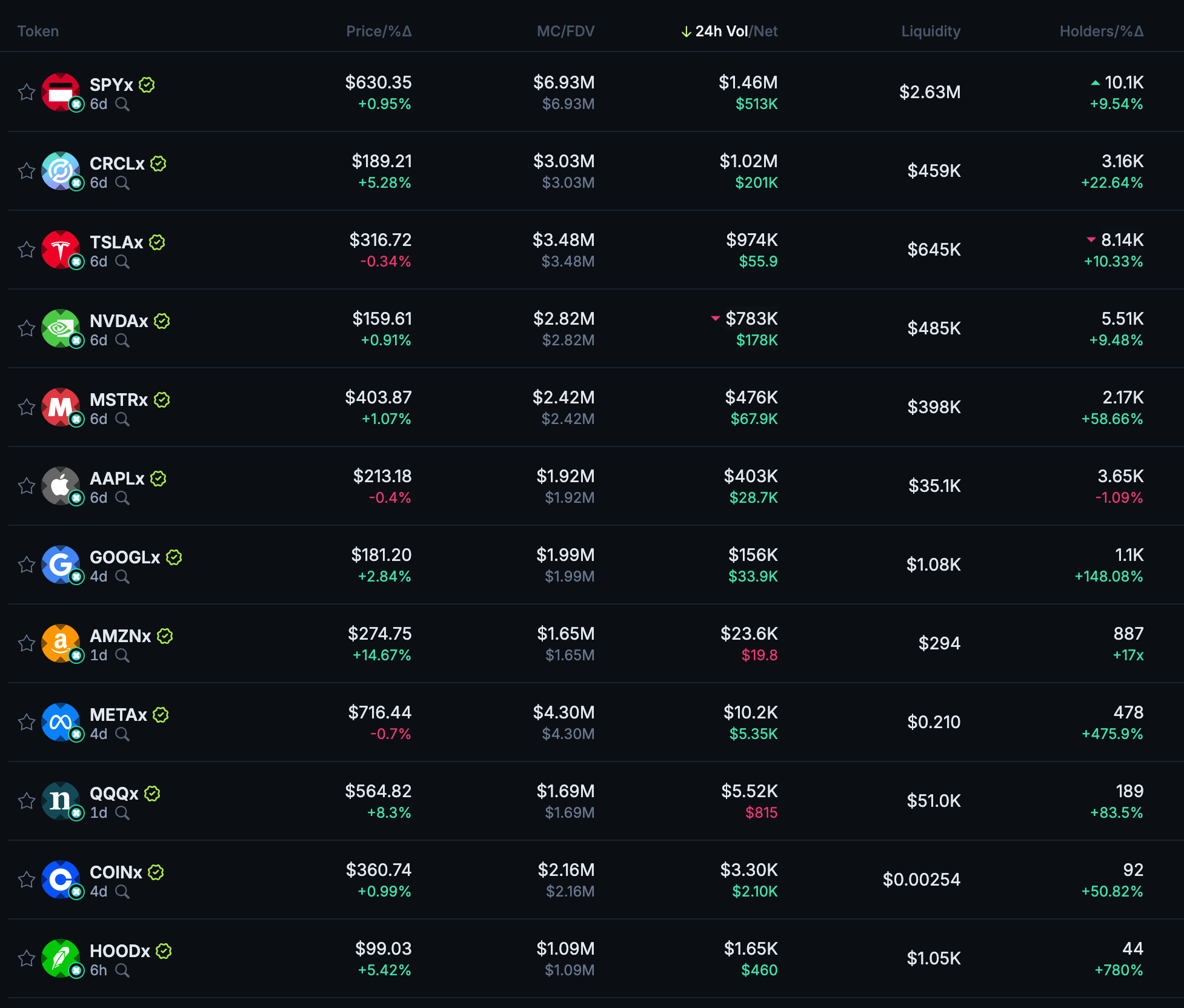
Buying on Solana gives you an open-ended tracker certificate, tokenised on a smart-contract ledger, so you can buy, sell and hold it just like any other crypto token.
- Underlying asset: Ordinary shares of top performing US equities. (USD-denominated)
- Exposure: 1:1 to the stock's share price, with dividend equivalents rebased into the token’s value.
- On-chain ledger: Issued and governed on a public smart-contract so your rights derive from the token itself.
I’ve been in crypto since 2012 and have seen countless attempts to bring traditional finance on-chain – this one really stands out for its simplicity and transparency.
Why It Matters
- Simplicity of access
No need to navigate KYC hurdles with a broker or juggle multiple wallets. Purchase stock via your usual token trading platform, and you’re instantly exposed to one of the world’s largest companies. - Built-in dividend handling
Rather than issuing cash dividends, the issuer automatically adjusts your token’s reference value to reflect the company payouts (net of any withholding tax). You enjoy the same economic uplift without a separate dividend transfer. - Instant settlement
Whenever you want out, you simply “sell” your tokens at the current market price of the shares. Settlement is on the blockchain, so there’s no messy transfer of stock certificates.
How to buy the US equities
I've selected some of the best equities below, including the S&P500 index which allows you to hedge the entire S&P500. Find the one you're looking for and click on the link (or image) and it will open up for you to buy direct on Raydium.
SP500 xStock ($SPYx)
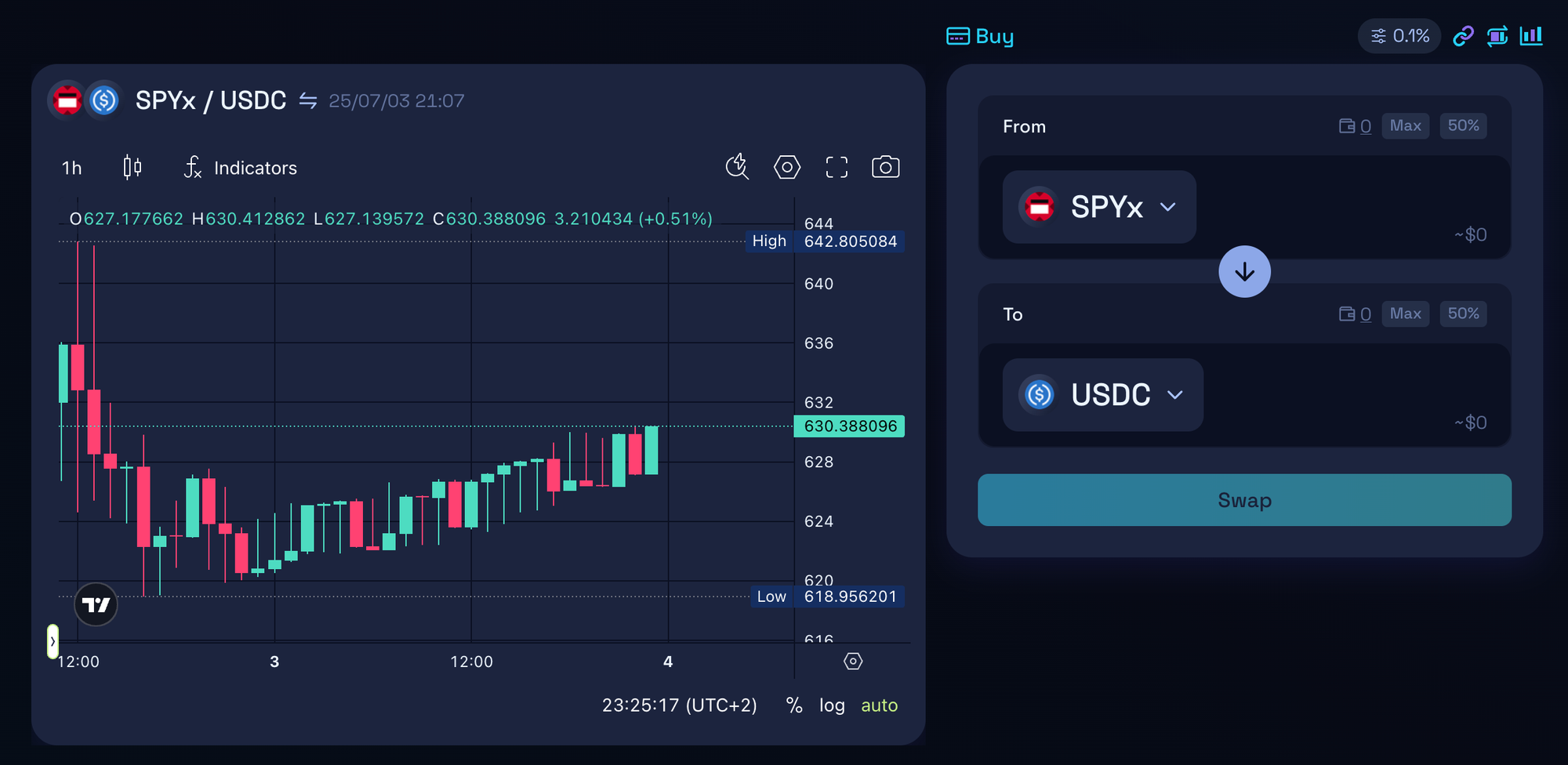
SP500 xStock (SPYx) tracks the price of SPDR S&P 500 ETF Trust (SPY). SPY is an exchange-traded fund that seeks to track the performance of the S&P 500 Index, representing 500 of the largest publicly traded companies in the U.S. It offers broad exposure to the U.S. equity market and is one of the most widely traded ETFs globally.
Amazon xStock ($AMZNx)
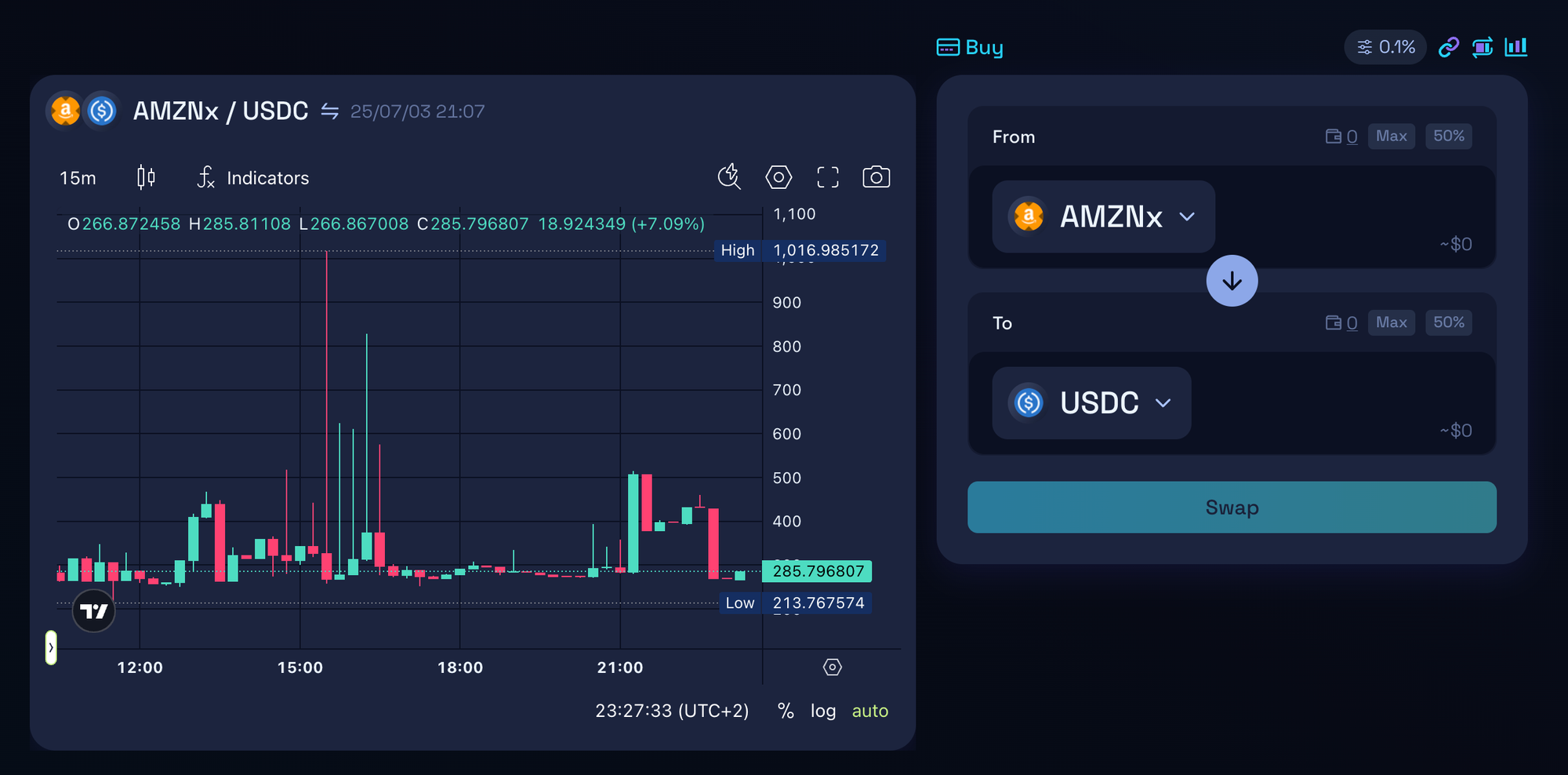
Amazon xStocks (AMZNx) tracks the price of Amazon.com, Inc.
Tesla xStock ($TSLAx)
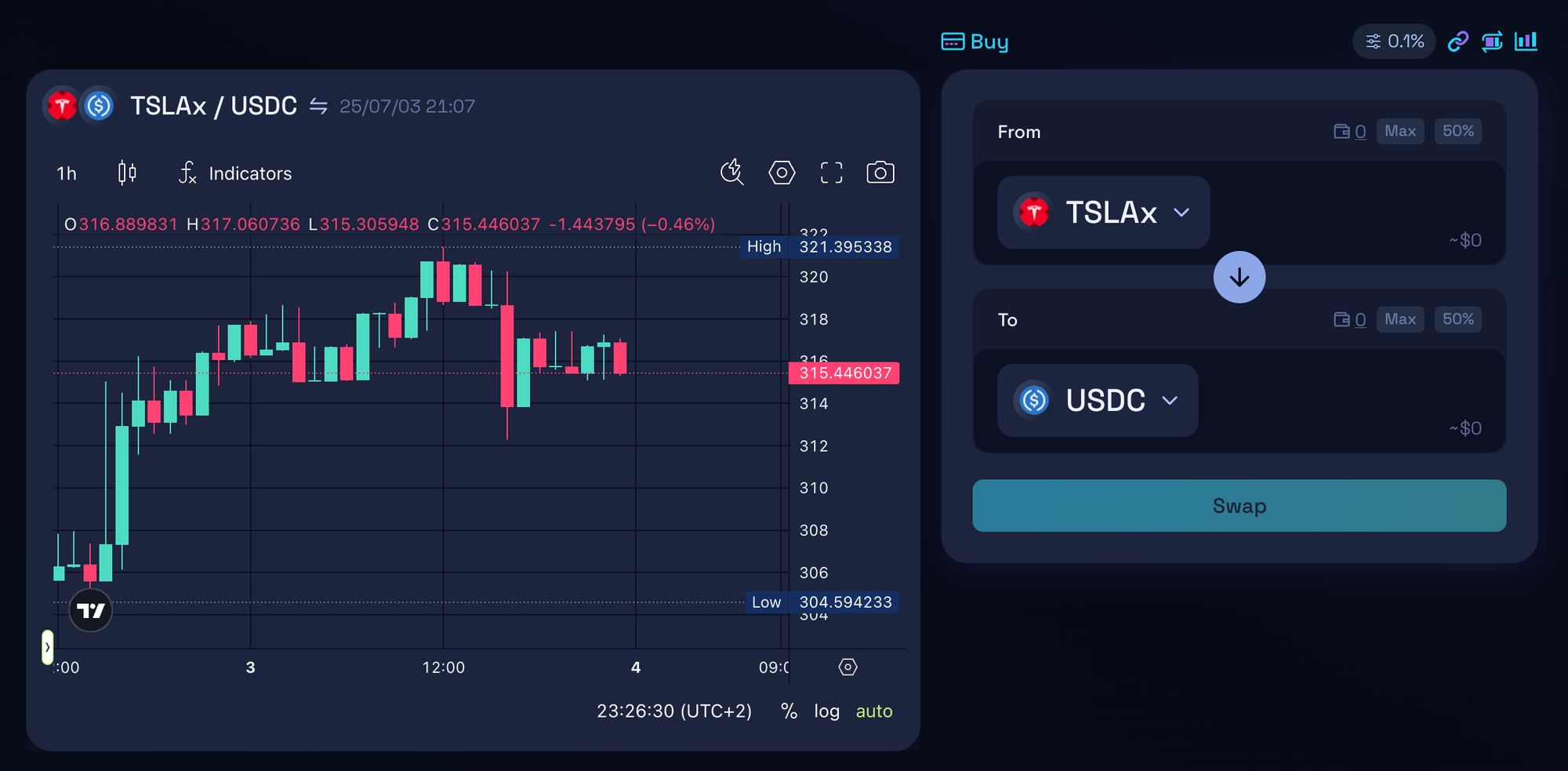
Tesla xStock (TSLAx) tracks the price of Tesla, Inc.
Important Risks and Considerations
While this is great in theory, in practice, you are not actually buying the shares in the company. You’re buying a derivative issued by Backed Assets (JE) Limited, underpinned by collateral the issuer holds on your behalf. That distinction matters.
- No share-holder rights. You won’t get voting privileges or a formal place at the company's AGM. This is strictly an economic play.
- Liquidity Doesn’t Equal Stock. Token liquidity on a secondary market may dry up, even if a company's shares trade heavily on NASDAQ. Wider bid-ask spreads could eat into returns, especially in volatile markets.
- Dividend “Rebate” Isn’t Cash in Hand. Dividends are rebased into the token value net of withholding tax. You won’t get a separate payout. If you’re chasing yield, remember it’s baked into the price only when you sell or redeem.
- Market disruption events. If a company stock trading is halted, redemption may be postponed or the issuer could call the product.
- Counterparty risk. It’s only as good as the issuer’s collateral arrangements—make sure you’re comfortable with Backed Assets (JE) Limited and the security agent structure.
Why Skepticism Matters
Tokenisation aims to simplify and democratise access to real-world assets. But it also layers in complexity:
- Legal nuance. Your legal rights stem from the token’s terms and the collateral agreement—not from owning a share certificate.
- Regulatory uncertainty. As tokenised securities evolve, so do the rules. Future regulatory changes could alter tax treatment or market access.
- Technical risk. Smart-contract bugs, ledger failures or cyber-attacks could threaten your position.
The tokenisation of US stocks is an intriguing bridge between equities and DeFi —but it’s not a substitute for owning stock directly. If your priority is raw economic exposure with minimal counterparty layers, this should fit. If you want voting rights, guaranteed liquidity, or pure dividend payouts, stick to the real thing—or at least be fully aware you’re accepting extra risk to access it on-chain.

